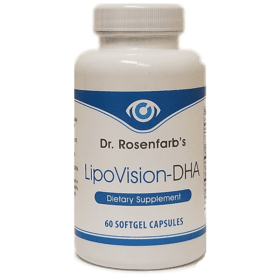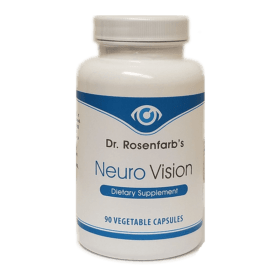Stargardt disease (fundus flavimaculatus, Stargardt macular dystrophy) is a common type of inherited macular dystrophy affecting young people. It arises from an inherited recessive gene and manifests as a very severe type of macular degeneration beginning in late childhood and resulting in legal blindness.
Mutations in the gene ABCA4 (ABCR) underlie Stargardt disease and also have been implicated in cone dystrophy, cone-rod dystrophy, and retinitis pigmentosa. The ABCA4 defect, located on chromosome 1, results in the eyes’ inability to transport retinoids (a form of vitamin A) from the photoreceptor cells to the retinal pigment epithelial layer that is responsible for providing nourishment to retinal cells. Stargardt’s is similar to age-related macular degeneration but usually identified before age 20. The first symptom is decreased vision.
The symptoms of Stargardt’s are similar to those of age-related macular degeneration (ARMD). It is diagnosed in 1 in 20,000 children over 6, usually identified before age 20. The first symptom is decreased vision.
Poor vision in dim light.
Difficulty in close vision, such as reading, although general vision may seem fine.
Loss of vision sharpness, poor color vision, and small blind spots.
Blurriness and distorted vision
Difficulty adapting to the dark after sunlight exposure, and/or light sensitivity.
In more severe stages of vision loss, patients may experience phantom vision or visual hallucinations. These episodes are not usually related to underlying psychiatric problems, but rather are normal attempts by the brain to make sense of impaired sensory information.
With further progression, oily deposits begin to accumulate in the layer of tissue comprising the retinal pigment layer of cells (RPE) which is the layer behind the macula. The RPE is a layer lying between the retina and the choroid, providing nourishment to photoreceptor cells.
These deposits, called “lipofuscin”, look like yellowish-tinted specks. The accumulation of lipofuscin eventually causes the wasting away of the macula and the RPE. How fast and to what degree vision is lost varies, especially in children. It can begin with 20/40 vision and rapidly decrease to 20/200 which is the level for legal blindness. Color vision may also be impaired in advanced Stargardt’s. By age 50, about half of all the patients assessed in clinical trials had visual acuities
Recommended Supplements:
-
Sale!

Hydro Vision – H2 Vision – Molecular Hydrogen Tablets
Original price was: $60.00.$49.00Current price is: $49.00. Add to cart -

CannaVision Oil 2500mg
$99.00 Add to cart -

LipoVision-DHA
$30.00 Add to cart -

Neuro Vision
$70.00 Add to cart -

CannaVision Oil 5000MG
$149.00 Add to cart -

Oculo-trophin
$20.00 Add to cart


